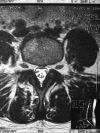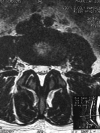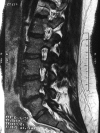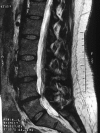Bertolotti's syndrome: an underdiagnosed cause for lower back pain
- PMID: 30356933
- PMCID: PMC6191822
- DOI: 10.1093/jscr/rjy276
Bertolotti's syndrome: an underdiagnosed cause for lower back pain
Abstract
Bertolotti's syndrome refers to the presence of pain associated to the anatomical variant of sacralization of the last lumbar vertebra. It is often a factor that is not addressed in the evaluation and treatment of lower back pain. The presence of a lumbosacral transitional vertebra is a common finding among general population with a prevalence that ranges between 4 and 30%, however, this finding is rarely associated to the cause of lower back pain and thus, the prevalence of Bertolotti's syndrome in general population is unknown doe to underdiagnosis. The sacralization of the fifth lumbar vertebra has been related to changes in the anatomy and biomechanics of the spine with no general agreement to its clinical significance, however Bertolotti's syndrome should be considered as a differential diagnosis for lower back pain, therefore, its pathophysiology, epidemiology and treatment must be a topic of general knowledge to physicians that often treat this condition.
Figures





References
-
- Castellvi A, Goldstein L, Chan D. Lumbosacral transitional vertebrae and their relationship with lumbar extradural defects. Spine 1984;9:493–5. - PubMed
Publication types
LinkOut - more resources
Full Text Sources

